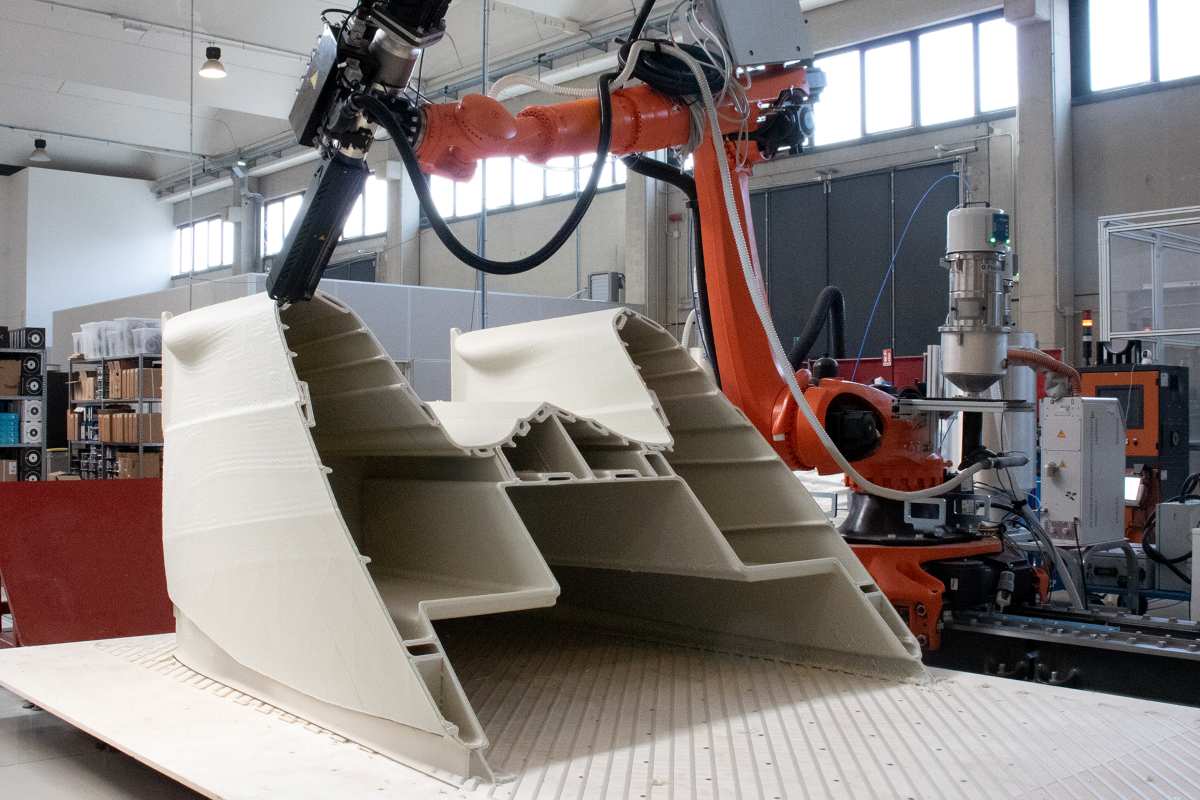A Spanish company has created the first electric and recyclable catamaran in one piece in Europe, using 3D robotic printing technology.
The firm V2 Group has successfully developed a monolithic 6-meter-long catamaran for open waters. This boat has been manufactured with 3D robotic printing technology provided by the leading Italian company, Caracol AM.
V2 Group is laying the groundwork for future industrialization in the nautical sector. This innovative solution already contemplates applications in other industries such as aerospace and automotive.
Advances in 3D printing and sustainability
Large-format 3D printing offers numerous competitive advantages, with highly customizable designs, accelerated production times, minimal material waste, and a significant reduction in environmental impact.
This pioneering technology allows for consideration of every aspect of the development process, from material selection to optimization of printing times, assembly, and testing. This identifies the key elements necessary to scale production efficiently, sustainably, and economically.

Towards an industrialized and sustainable future
“Large-format 3D printing technology is transforming the nautical sector, offering competitive advantages with 100% digital designs, fast production, minimal material waste, and a significant reduction in environmental impact,” explains Albert Chamorro, CEO of V2 Group.
This revolutionary prototype is also 100% electric and 90% recyclable, a remarkable achievement for a sector facing environmental challenges.
The catamaran is equipped with lithium-ion batteries of the latest generation, allowing for an approximate range of 60 kilometers at cruising speed. This electric technology not only eliminates emissions of polluting gases but also considerably reduces noise, minimizing disturbance to marine fauna.
This development not only demonstrates the viability of large-format robotic 3D printing but also establishes the foundation for a new era in boat manufacturing and nautical components, facilitating the transition towards industrializing the process.
Moreover, the use of recyclable materials, such as advanced fiber-reinforced composites, gives the catamaran exceptional corrosion resistance, extending its lifespan and reducing maintenance costs.
Production for 2025
The catamaran built by V2 Group has been selected as the flagship vessel, representing the most complex floating structure conceived. This boat, manufactured in one piece, stands out for its advanced design and maximum efficiency.
Following the success of this first prototype, V2 Group plans to establish several production centers in Spain during 2025.
This expansion plan aims to consolidate the country’s industrial capacity in additive manufacturing applied to the nautical industry, promoting specialized employment and the development of sustainable technologies within the maritime sector.
Do you already know our YouTube channel? Subscribe now!

